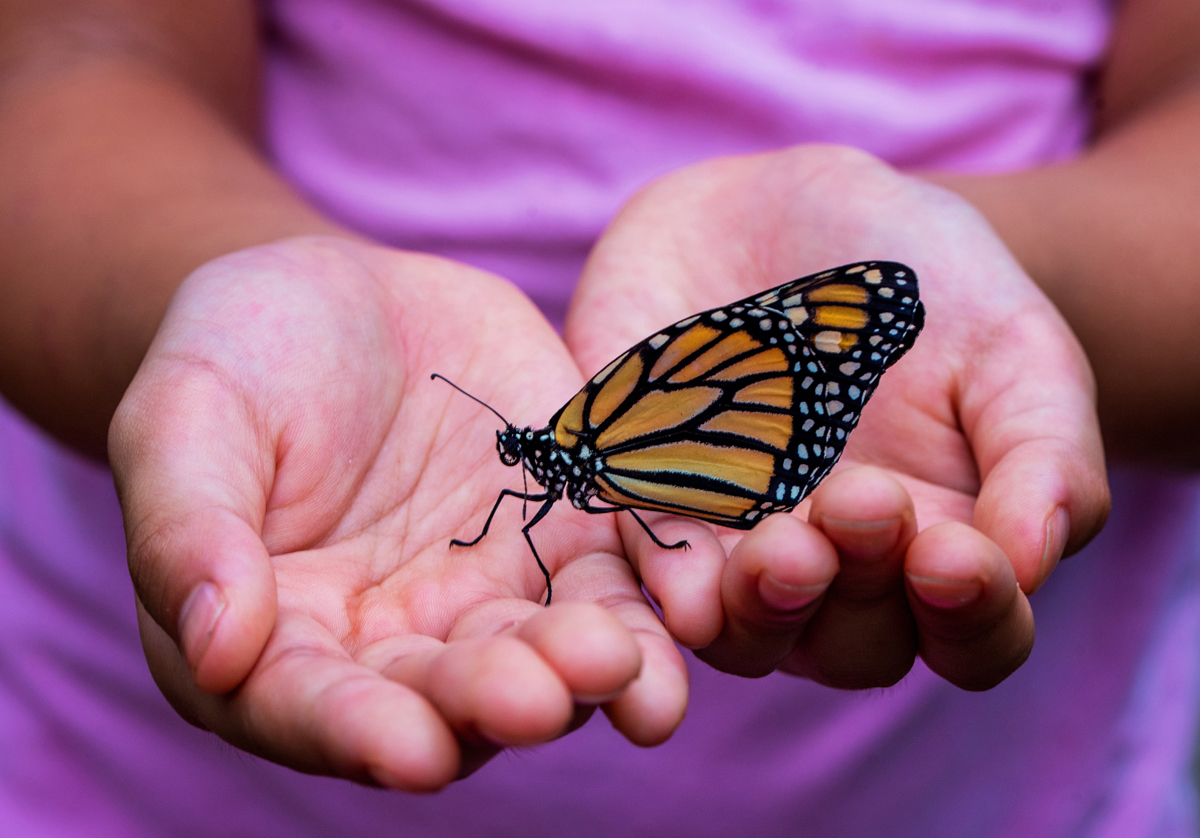Photo by David Clode from UnSplash.
By Cheryl Scott
When monarch butterflies migrate over 2,000 miles to Mexico during the winter, they head to the same places within the fir forests each year. This fact may not sound impressive, but the monarchs who fly to Mexico may be fourth generation butterflies who have never seen the mountain forests and do not have any living ancestors to lead the way from experience.
“How they repeatedly find the same tiny patches of wintering habitat each year remains a great mystery,” said Doug Taron, chief curator at Chicago Academy of Sciences’ Peggy Notebaert Nature Museum.
Taron will speak about the life cycle and migration of monarch butterflies at a West Cook Wild Ones monthly meeting from 2:30 to 4:30 p.m. Sunday, May 26, at the Oak Park Public Library Maze Branch, 845 Gunderson Ave. The event will include information on what the monarch butterflies do during winters in Mexico, how the population is tracked and how people can take actions to conserve the monarchs.
The monarch butterflies began migrating back to the Chicago area in early to mid-March from forested mountains in Mexico that are 100 miles west of Mexico City, Taron said. However, the first butterflies to migrate do not make it back to the Chicago area.
“The females lay eggs in Texas and then die,” Taron said. “The offspring continue the northward flight.”
The offspring from Texas reach Chicago in late May, which means those attending the monarch butterfly talk later this month may see some of the insects that day. Three to four generations of monarchs will stay in the area over the summer, Taron said. The monarchs that emerge from their chrysalises from mid-August into September are the only ones to depart for Mexico, he said. The chrysalis stage of the life cycle is the period when the caterpillar is transforming into an adult butterfly.
To conserve the monarch butterflies, Taron said people can plant milkweed. Caterpillars only eat milkweed, and monarch butterflies lay their eggs on the plants. To find out more information on monarch migration, attend the West Cook Wild Ones event on May 26.
Doug Taron, chief curator at Chicago Academy of Sciences’ Peggy Notebaert Nature Museum, pauses during a hike in the mountains of the Transvolcanic Belt of Mexico. Monarchs migrate to this area during the winter.


